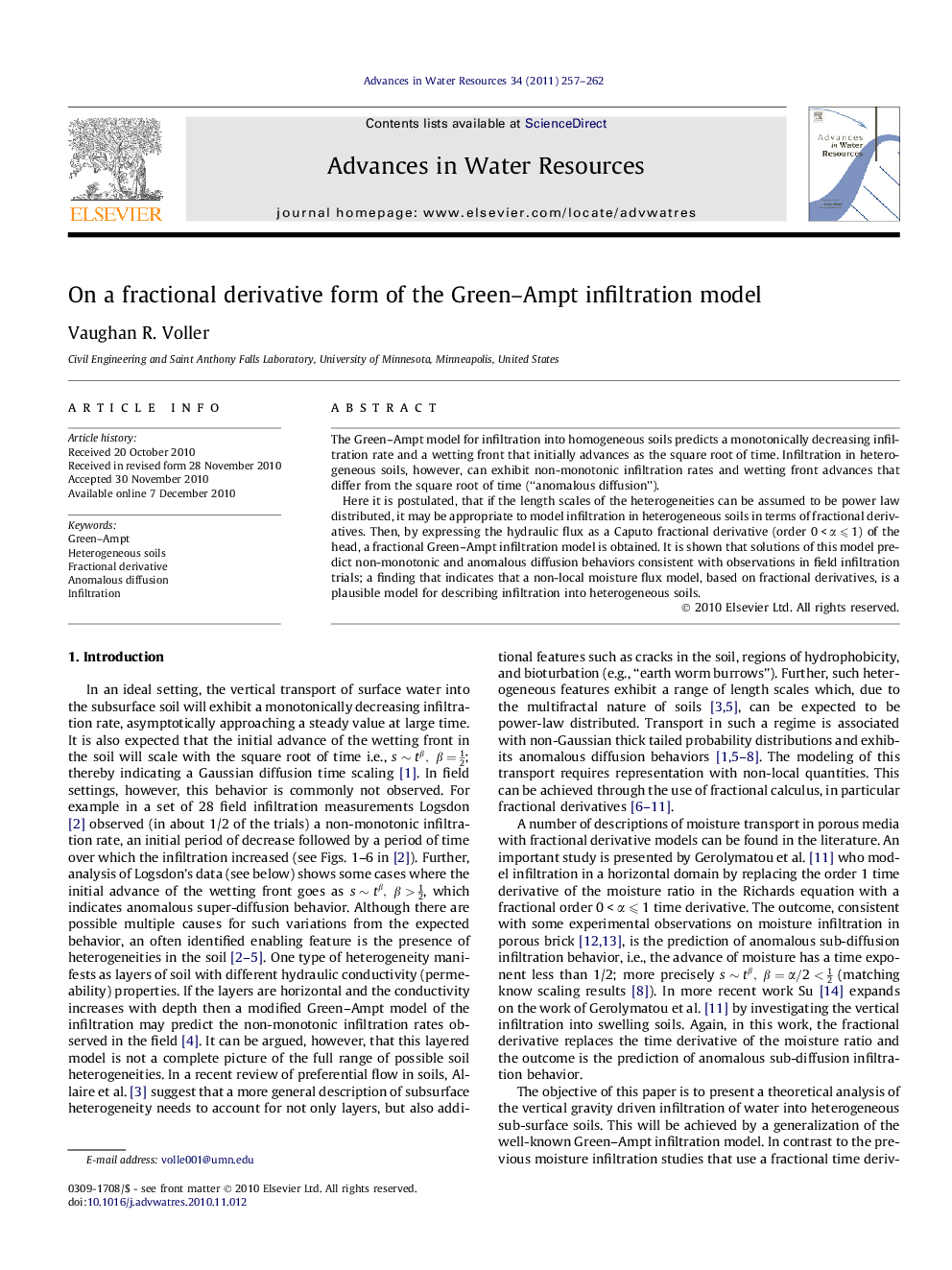| Article ID | Journal | Published Year | Pages | File Type |
|---|---|---|---|---|
| 4526287 | Advances in Water Resources | 2011 | 6 Pages |
The Green–Ampt model for infiltration into homogeneous soils predicts a monotonically decreasing infiltration rate and a wetting front that initially advances as the square root of time. Infiltration in heterogeneous soils, however, can exhibit non-monotonic infiltration rates and wetting front advances that differ from the square root of time (“anomalous diffusion”).Here it is postulated, that if the length scales of the heterogeneities can be assumed to be power law distributed, it may be appropriate to model infiltration in heterogeneous soils in terms of fractional derivatives. Then, by expressing the hydraulic flux as a Caputo fractional derivative (order 0 < α ⩽ 1) of the head, a fractional Green–Ampt infiltration model is obtained. It is shown that solutions of this model predict non-monotonic and anomalous diffusion behaviors consistent with observations in field infiltration trials; a finding that indicates that a non-local moisture flux model, based on fractional derivatives, is a plausible model for describing infiltration into heterogeneous soils.
Research Highlights► A modified Green–Ampt model which accounts for soil heterogeneity is developed. ► The key feature is a fractional derivative to describe the hydraulic flux. ► The model predicts non-monotonic and anomalous infiltration behaviors. ► The model predictions match the form of infiltration rates seen in field tests. ► This work provides a simple example of the practical use of fractional calculus.
